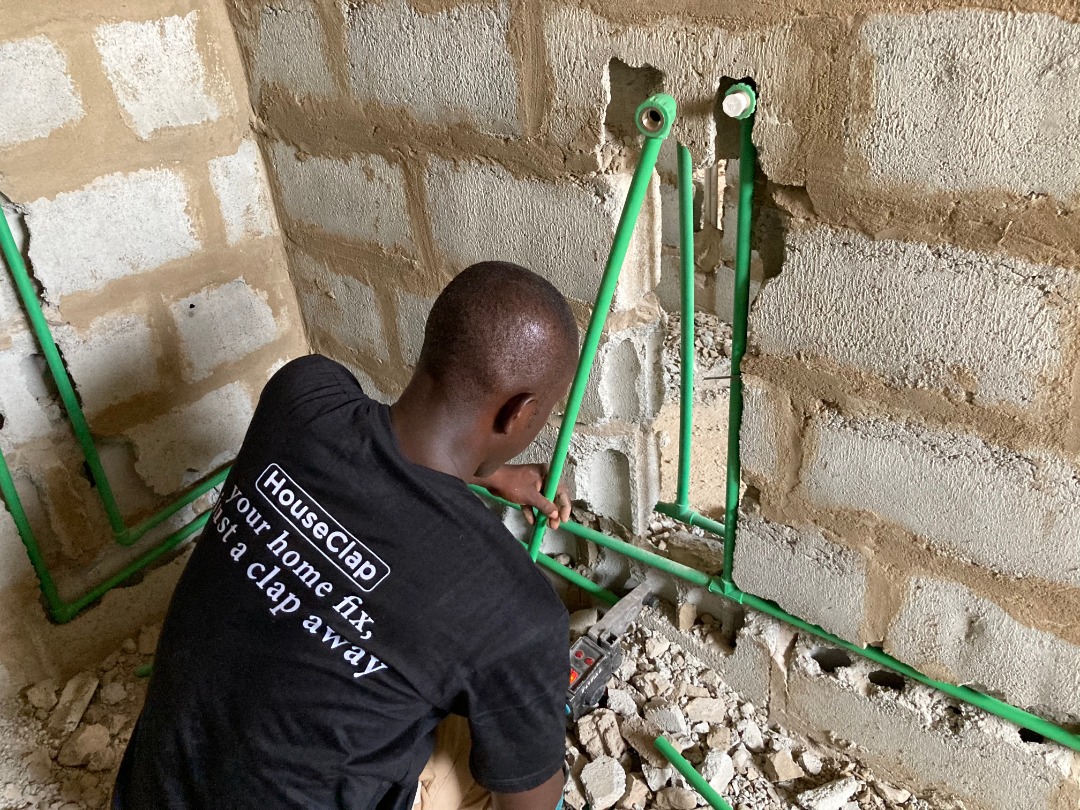PPR is a hot and cold water supply system suitable for sanitary and potable water applications and heating systems. The pipes and injection molded fittings are made of Polypropylene Random (PPR), they are joined by fusion welding, ensuring a homogeneous, all plastic system. You might be wondering if, it’s necessary to use PPR pipes over PVC pipe

What Is PPR Pipe?
PPR pipe is a straight and rigid cylindrical pipe, made from Polypropylene Random Copolymer plastic, produced through a continuous extrusion process. They are commonly offered in green or white colour, and outer diameter sizes ranging from 20mm to 110mm making the pipe walls far thicker than PVC. PPR pipe is accompanied by a series of connection fittings, parts, and accessories available for every pipe diameter.
Can PPR be used instead of PVC?
Because of the robust nature of PPR, most plumbers and civil engineers like to use PPR for their works. It gives that expect finishing needed for your house. PVC pipes are known to fade out easily over time and start to release chemicals into the water.
The reason most homeowners do not generally like PPR is because of the price. Here in Ghana, the price of PPR is a bit higher than the usual PVC. But this seems to be the case everywhere. The PPR is expensive and worth every dim.
Below are some differences between PPR and PVC pipes:

Differences between PPR and PVC pipes
- Materials are different: PVC is made of polyvinyl chloride, and PPR is made of random copolymer polypropylene.
- Color difference: PPR pipe toughness is better than PVC, and good quality and bright color, others have a light milky yellow, and poor-quality color and chaos. The PVC pipe produced by the plastic extrusion line is milky white, the material is harder than PPR, and the cross-section is not shiny, but its outer surface is shiny.
- The difference in wall thickness: The diameters of PPR and PVC pipes are the same. The biggest difference is in the wall thickness, PPR pipe thickness, and PVC pipe wall thickness. Both PPR pipe and PVC pipe have the words on them. You can understand at a glance, and the toughness of the PPR pipe is good. Under the same pipe diameter, the wall of the PPR pipe is usually thick.
- The price: The price tag is different, the general price of PVC is lower than PPR, low price is the advantage of PVC material.
- PPR pipe has the advantages of a lightweight, good anti-corrosion performance, no fouling, and long service life.
- Acidity: In addition, PPR pipes are safe and non-toxic. It is used in hot and cold-water pipes as well as in drinking water systems. The adhesive used to join bends, Tees, and pipes in the PVC is highly scented and likely to be acidic to some homeowners.
Why you need to get a PPR pipe instead of a PVC pipe?
PPR pipes and PPR pipe fittings have a number of advantages. The PPR piping system comes with fittings, valve, fusing machine, and other accessories that are available for every size of pipe. They are safe to use and are non-toxic. That’s why this is the best choice when it comes to drinking water piping systems. Listed below are a few advantages of PPR over PVC:
- Low conductivity
The pipes have very low thermal conductivity, hence are ideal for the cold and hot water supply systems. They are used in modern buildings along with the glass wool insulation systems, and together the two provide for greater energy efficiency.
- Smooth inner surface
Compared to other traditional types of pipes, the PPR pipes have a very smooth inner wall or surface. Because of the smooth walls, the pipes only have a small effect when it comes to frictional resistance. It also reduces the pressure during transporting and distributing the fluid.On the other hand, the PPR pipes do not flake, unlike the metal pipes, that’s why this is a safer choice for drinking water.
- Non-toxic
Toxic chemicals that come from our water supply is a threat to our health, but pipes and fittings made from PPR are harmless raw materials. Thus, it will not carry toxic substances that will affect the health of people drinking water from it. And it’s not only safe for our bodies, but it is also safe for the environment. Since they are non-toxic, any production or installation of the PPR piping system will not cause pollution.
Conclusion
We hope that this article has helped you in making a decision on which pipes you’ll use for drinking water and other important plumbing connections when building your dream home.
If you are looking for a PPR piping system and other construction materials for your next project, you can visit our page and inquire today. If you need to get some plumbing work done book a verified plumber to get you a quotes today.
Don’t miss out, stay updated. Follow us on our Facebook.

